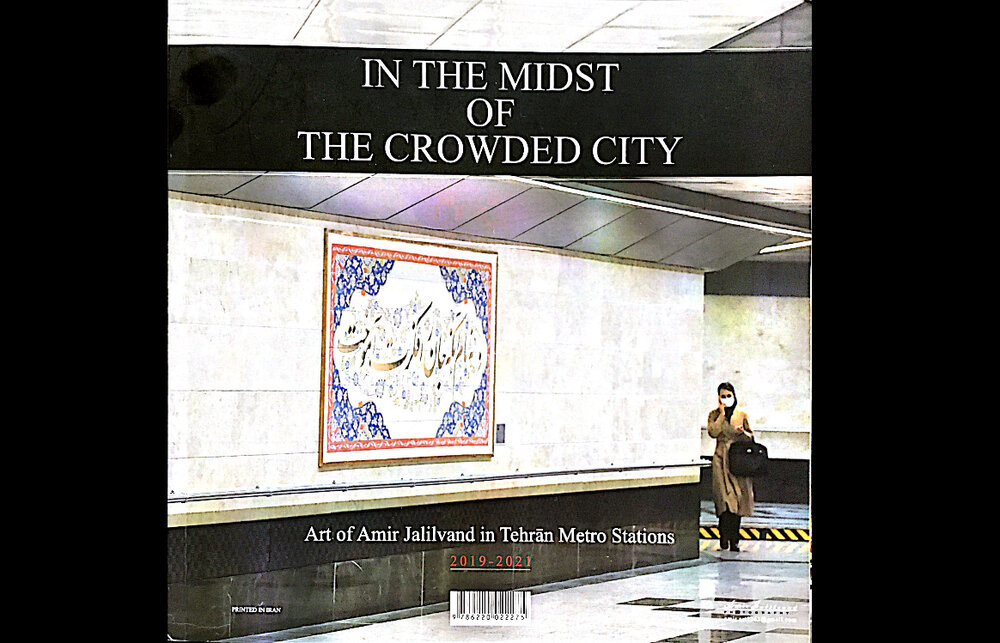Tehran metro art unfolds stories from history, literature

TEHRAN – The arts are inviting people at Tehran subway stations to enjoy their trips with food for thought during their daily commutes to work.
It’s a given that in the hustle and bustle of riding the metro day in and day out, drowsy passengers in the early morning hours and weary commuters at the end of their workday are in no mood to admire and appreciate the fine artwork decorating metro stations.
Nevertheless, artworks have been mounted in corridors and on walls of metro stations to add color to commuting and enhance the otherwise spiritless subterranean life. In addition, each piece of art reminds people of a part of their cultural history and literary heritage.
Calligrapher and photographer Amir Jalilvand is one of the artists who has produced artworks for Tehran subway stations. His works embellish seven stations and he has even published a pictorial book to attract people’s attention to the artworks.
In his English-Persian book entitled “In the Midst of the Crowded City”, he briefs readers on how he was tapped by Tehran Metro officials to do the artworks and the messages his creations convey.
The underground art project got off the ground in 2019 with a nastaliq calligraphy of the poem “Neynameh” by Molana Jalal ad-Din Rumi for Molavi (Rumi) Station, which is located near a street named after the Persian mystic and poet who lived in the 13th century.
Eighteen verses of the poet were inscribed on lapis lazuli tiles in a 274 X 224-centimeter tableau, which additionally features an arabesque decoration design.
A highlight of the collection is “Homeland’s Youth” set up at Modafe’an Salamat (Health Defenders) Station. The artwork represents a nastaliq calligraphy of “Tulips have grown from the blood of our land’s youth”, a verse of the famous epic poem composed by Aref Qazvini for the Iranian youth killed in the Constitutional Revolution (1906-1911).
A portrait of Qazvini by an anonymous artist is also seen attached to the artwork created on tiles.
The Constitutional Revolution is also commemorated by another artwork entitled “National Commander and National Chieftain” at the station.
The work depicts the portraits of Sattar Khan and Baqer Khan, two leaders of the Constitutional Revolution, and a nastaliq inscription reading “Commander and Chieftain of the Constitutional Revolution, Sattar Khan and Baqer Khan”.
“Ey Iran” (“O Iran”) is another outstanding work in the collection. The work comprises 144 clay tablets, which like pieces of a puzzle shape a 292 X 300-centimeter tableau installed at Ahang Station.
The work bears a siah-mashq inscription reading “O Iran! O land of gems abound!”, a verse from a patriotic song composed by Hossein Golegolab when Iran was occupied after the Anglo-Soviet invasion in 1941 despite that the country had declared its neutrality in World War II.
On his way to the Iran National Music Association, Golegolab was really sad to see the occupiers’ abusive behavior toward Iranians, however, it provided the inspiration for him to compose “Ey Iran”.
He later teamed up with musician Ruhollah Khaleqi and singer Gholam-Hossein Banan and the patriotic song was born.
These and many other artworks decorating Tehran subway stations have similar stories from Iranian history and Persian literature and culture.
Photo: Front cover of the book “In the Midst of the Crowded City”.
MMS/YAW
Leave a Comment